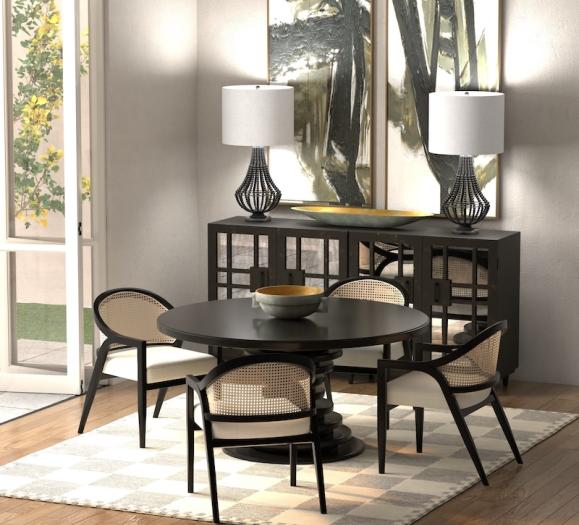Last night, interior designers and industry professionals gathered at Pagoda Red in Chicago's Fulton Market neighborhood for cocktails and a live taping of Nick May's The Chaise Lounge podcast. With panelists Julia Buckingham; Betsy Nathan, the founder of Pagoda Red; and designer Claire Staszak of Centered by Design, it's not surprising that the conversation turned to communication and just how important it is to interior designers.
For Buckingham, who owns an antique shop and sells antiques on 1stDibs.com, communication matters most in her product descriptions. Though many customers would rather see her products in person, she's found that the products with the best descriptions — everything from dimensions, color and the stories behind the product — sell the best online.
Nathan's Pagoda Red opened 20 years ago, and Nathan herself is an expert in Chinese provenance, craftsmanship, joinery and history. In her showroom, customers come to her for the story behind the products the product they're seeing, and having sourced the products from China herself, Nathan wows the customers with the history of the piece as well as the story of how she found it. As she and Buckingham said, the story sells itself.
For interior designers without a shop though, good communication matters just as much, and it can be the difference between a good relationship with a client and a bad one. Here are a few tips from the panelists on being a better communicator.
Send updates during client downtime
For many of your projects, there is probably a little downtime between the time you order the products and the time they're delivered. You might get a few messages from your client here and there, but on the whole, it's crickets for now.
When Buckingham notices that she hasn't communicated with a client for some time, she sends what she calls a love note — a nice update on how the project is going, any timeline updates and general well-wishes. It may not seem like much, but these messages do wonders for her clients. They feel more secure in the work, and they appreciate being kept in the loop.
Short, regular updates can also smooth out any issues along the way. If you're transparent about how a project is progressing, your clients will be more likely to forgive setbacks. For example, let's say you're ordering a sofa for a client. You update your client one week on its progression, and everything's going fine. Then the next week, something delays the shipment. If you've been honest and upfront with your client, they're more likely to take it in stride and accept the misfortune.
Ask for feedback in person and via email
When you've completed a project and the client is happy, you probably just want to take a break and not think about that project for a while, but before you leave your client's home for the last time, you need to ask him or her for feedback about the project.
Showrooms aren't the only ones who need feedback. Honest, constructive feedback can help you grow as a designer and identify any problems in your design and project management processes. You might decide to tweak your process or find a different way to complete a task. You'll also find out what's working for your clients, what they liked best about the process and how it compared to what they thought they would be getting from your services.
Before you leave a home or a client for the last time after installation, take a moment and ask your client for their thoughts on the project. Most will probably be happy to tell you what they liked, but some may be reluctant to say they didn't like something. If that's the case, encourage them to email their thoughts. It's often easier to offer constructive criticism in front of a computer screen where you have time to carefully write out what you want to say.
To hear more from this conversation, check out The Chaise Lounge podcast and keep a lookout for this upcoming episode.
Designers, tell us: How do you make communication easier for your clients? Share with us in the comments.
Photo: Pexels







